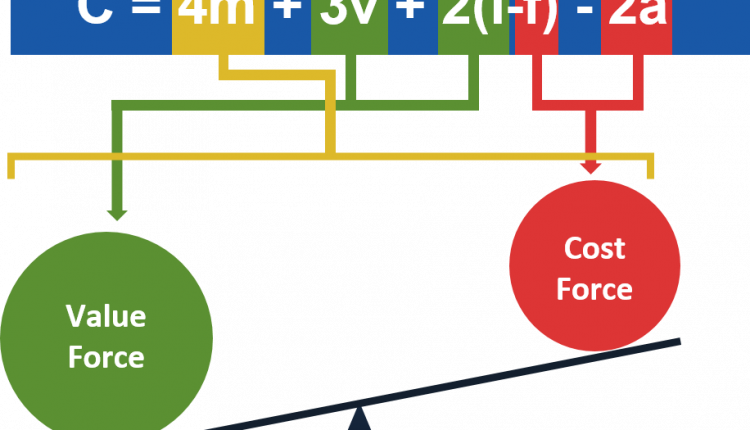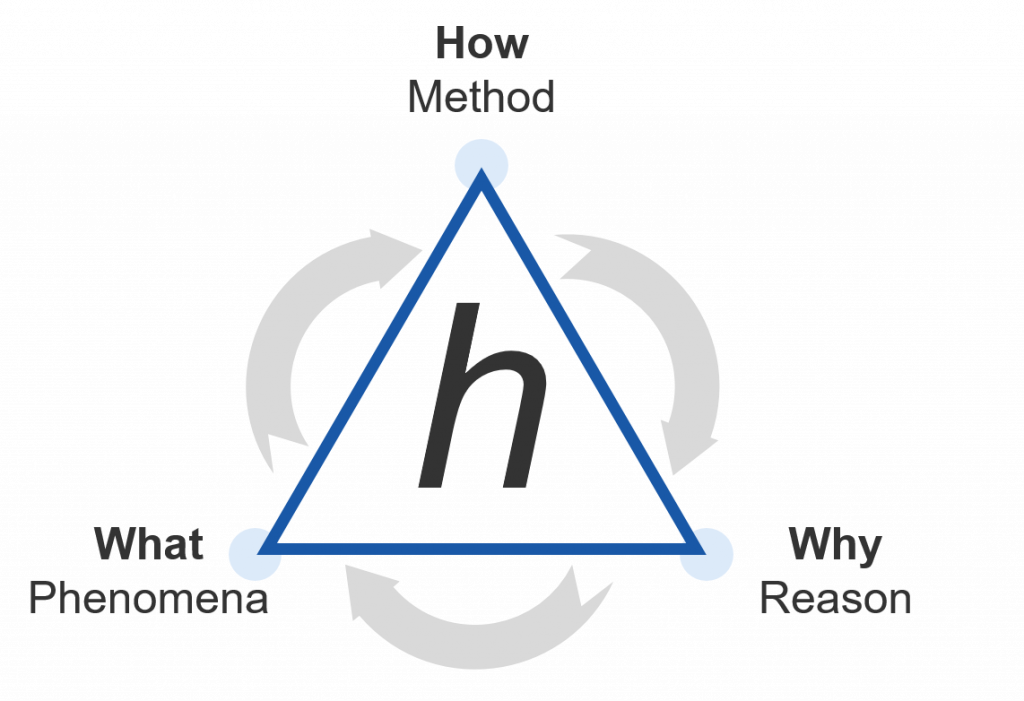On the surface, the words “hypothesis” and “marketing” seem like they would never be in the same sentence, let alone the same paragraph. Hypotheses are for scientists with fancy lab coats on, right? I totally understand this perspective because, unless A/B Testing CRO (conversion rate optimization) is part of your company’s culture, you may ask yourself, “Where would I ever use a hypothesis in my daily activities?” To this question, I would answer “EVERYWHERE.”
By everywhere, I don’t just mean for your marketing collateral but also for any change within your company. For example, I oversee the operations of our Research Partnerships, and when making a team structure change earlier this year, I created a hypothesis that over the next few months I will prove or disprove. Here’s a modified version of this hypothesis:
IF we centralize partnership launches BY creating a dedicated Research Partner launch team and by building out processes that systematically focus on the most critical business objectives from the start, we WILL increase efficiency and effectiveness (and ultimately successful Partnerships) BECAUSE our Research Partners place high value on efforts that achieve their most critical business objectives first.
Can your offers and messaging be optimized?
The American Marketing Association defines marketing as “the activity, set of institutions, and processes for creating, communicating, delivering, and exchanging offerings that have value for customers, clients, partners, and society at large.”
So, if you are reading this blog right now and your job function reflects the above definition even in the slightest, can you answer one question for me: Do you have 100% confidence that each offer and message you create and deliver to your customers is the best it could possibly be?
If you answered yes, then our country desperately needs you. Please apply here: https://www.usa.gov/government-jobs.
If you answered no, then you are like most of us (and Socrates, by the way, i.e., “I know that I know nothing”) and you should have hypothesis creation operationalized into your process, because why wouldn’t you want to test message A versus message B to a small audience before sending an email out to your entire list?
How to create a marketing hypothesis
So first, let’s discuss what a hypothesis is and how to create one.
While there are several useful definitions of the word hypothesis, in Session 05: Developing an Effective Hypothesis, University of Florida’s graduate course MMC 5422, Flint McGlaughlin proposes the following definition as a useful starting point in behavioral testing: “A hypothesis is a supposition or proposed statement made on the basis of limited evidence that can be supported or refuted and is used as a starting point for further investigation.”
Now that we know what we are looking for, we need a tool to help us get there. In Session 04, Crafting a Powerful Research Question of this same course, McGlaughlin reveals that this tool is the MECLABS Discovery Triad, a conceptual thinking tool that leads to the creation of an effective hypothesis — the “h” in the center of the triad represents the hypothesis.
Before creating a hypothesis, the scientists at MECLABS Institute use this Discovery Triad to complete the following steps for all of our Research Partners:
- We uncover the business objective (or business question) driving the effort. Typically, we find two patterns regarding the business objective. First, it is broader in scope than a research question that would be suitable for an experiment. Second, this objective takes the form of a question, which typically starts with the interrogative “How.” For example, “How do I get more leads?” “How do I drive more traffic?” or “How do I increase clickthrough rate (CTR)?” My business objective in the examples above was, “How do I create a more valuable research partnership from the perspective of the research partner?”
- Now that we are focused on an objective, we ask a series of “What” questions. For example, “What is happening on this webpage?” or “Where are visitors to page A going if they do not make it to page B?” Essentially, we are looking to understand what the data can tell us about the behavior of the prospective customer. This series of “What” questions should encompass both quantitative (e.g., on-page clicks, next page visits, etc.) and qualitative questions. (e.g., What is the customer’s experience on this page?)
- We ask a question which starts with the interrogative “Why.” A “Why” question enables us to make a series of educated guesses as to why the customer is behaving in a certain way. For example, “Why are 75% of visitors not clicking the ‘Continue to Checkout’ button?” “Why are 20% of shoppers not adding the blue widget to their cart?” or “Why are only 5% of visitors starting the free trial from this page?” To answer “Why” questions, the research scientists at MECLABS apply the patented Conversion Heuristic to the page:
- What can we remove, add or change to minimize perceived cost?
- What can we remove, add or change to intensify perceived value?
- What can we remove, add or change to leverage motivation?
- We ask a second, more refined, “How” question (research question) that identifies the best testing objective. For example, if your business question was, “How do we sell more blue widgets?” and during the “What” stage, you analyzed your entire funnel, discovering that the biggest performance leak is on your blue widget product page, then your Research Question could be something like, “How do we increase CTR from the blue widget product page to the shopping cart checkout page?”
Essentially, a powerful Research Question focuses your broader Business Question around a specific subject of research. After all, there are many ways to sell more blue widgets but only a handful of possible ways to sell more blue widgets from the product page.
The four components of a hypothesis
With a powerful Research Question created, you are now ready to develop a series of hypotheses that will help you discover how to express your offer to achieve more of your desired customer behavior using the MECLABS Four-step Hypothesis Development Framework:
- The IF statement. This is your summary description of the “mental lever” your primary change will pull. In fact, the mental lever is usually a cognitive shift you are trying to achieve in the mind of your prospective customers. For example, “IF we emphasize the savings they receive” or “IF we bring clarity to the product page.”
- The BY statement. This statement lists the variable(s) or set of variables (variable cluster) you are testing. This statement typically involves the words “add, remove or change.” For example, “BY removing unnecessary calls-to-action (CTAs)” or “BY adding a relevant testimonial and removing the video player.” (Tip: This statement should not contain detailed design requirements. That next level of precision occurs when you develop treatments or articulate your hypothesis.)
- The WILL statement. This should be the easiest statement to compose because it is the desired result you hope to achieve from the changes you are proposing. For example, “We WILL increase clickthrough rate,” or “We WILL increase the number of video views.” (Tip: This statement should tightly align with the Test Question.)
- The BECAUSE statement. While last in order of appearance, this statement is the most critical as it’s what connects your work deeply into your customer’s being. By that I mean, the metric identified in your WILL statement either increased or decreased because the change you made resonated or did not resonate in the mind of your customer. For example, “BECAUSE prospective customers were still searching for the best deal, and every distraction made them think that there’s a better deal still out there,” or “BECAUSE prospective customers clearly see the savings they receive.” (Tip: Your BECAUSE statement should be centered around a single customer insight that, through testing, adds to your broader customer theory.)
So, if you put all this together, you have:
IF we bring clarity to the product page BY removing unnecessary CTAs, we WILL increase clickthrough rate BECAUSE prospective customers were still searching for the best deal, and every distraction made them think that there’s a better deal still out there.
Just like I used the Discovery Triad and Four-Step Hypothesis Development Frameworks for a team structure change, these processes can be used for any type of collateral you are “creating, communicating, delivering.” Even if you are not A/B testing and just making changes or updates, it’s a valuable exercise to go through to ensure you are not just constantly throwing spaghetti on the wall, but rather, systematically thinking through your changes and how they impact the customer.
You might also like
Online Marketing Tests: How Could You Be So Sure?
Optimizing Forms: How To Increase The Perceived Value For Your Customers
Download the Executive Series: The Web as a Living Laboratory






At the end of the day, marketing really is a science. So it’s not too surprising that treating it like one can be so effective. And well, if science can send us into space, I think it’s not much of a stretch to assume we can use it to figure out how to sell a guy a watch.
Really? A science? So you conclude that SWATCH’s dramatic switch from ‘automatic’ and ‘winding’ mechanical wrist watches to Quartz watches was mere ‘scientific marketing’? Or was there a fair bit of creativity, boldness and lay-my-head-on-the-block kind of thinking and decision-making?